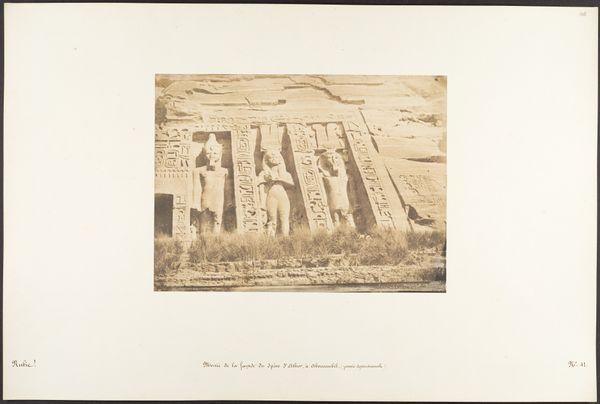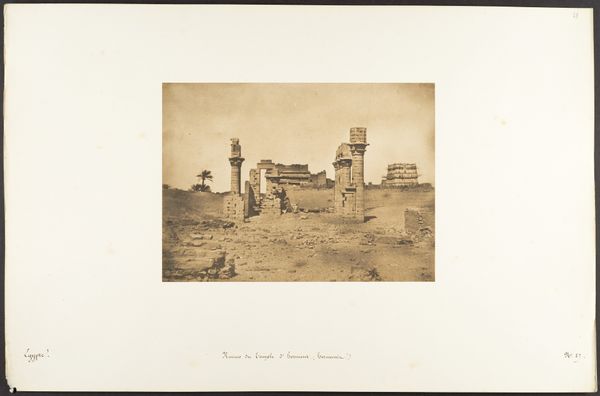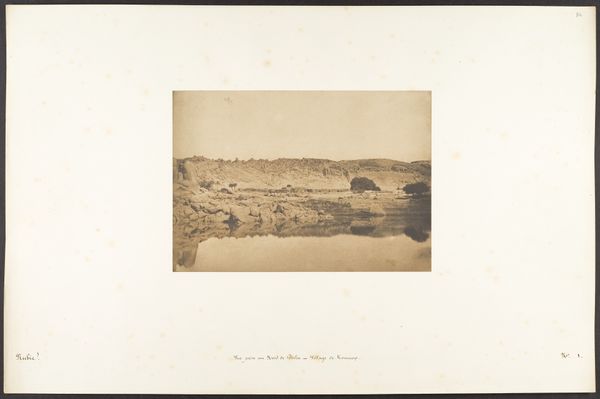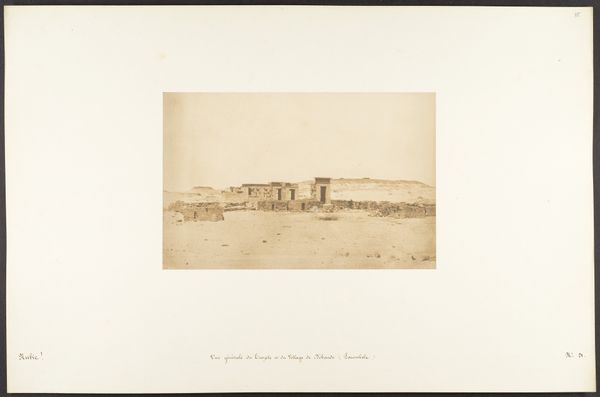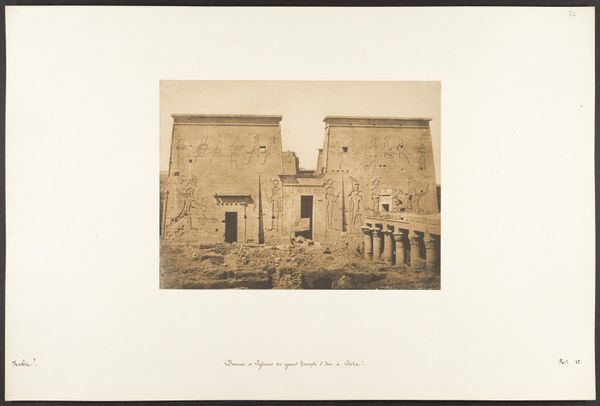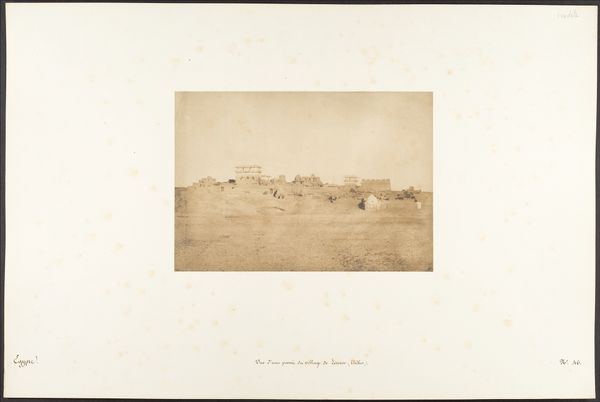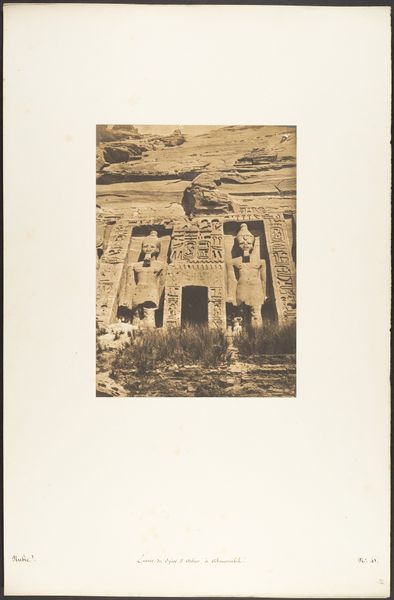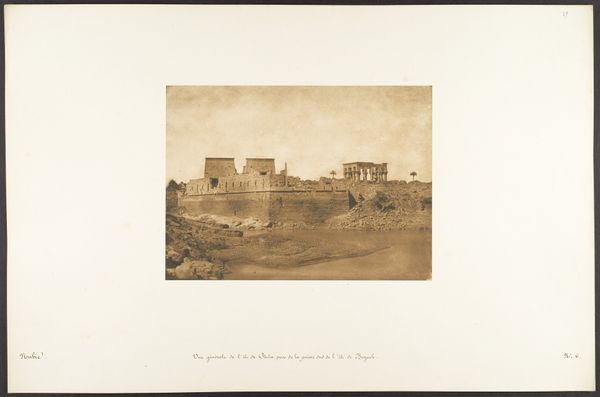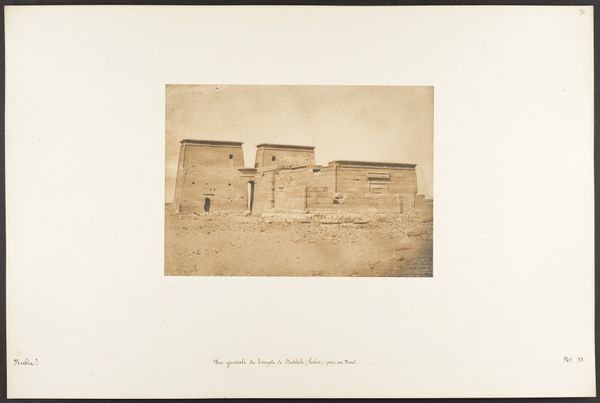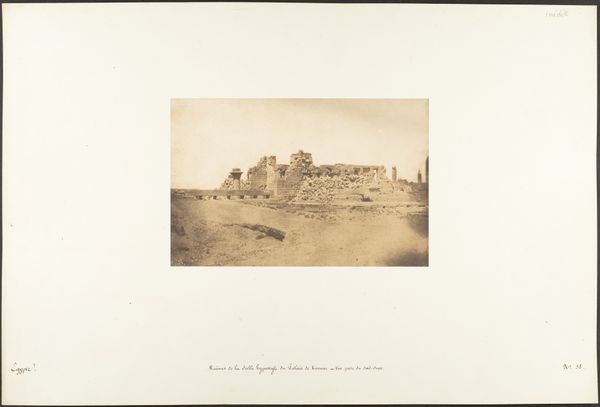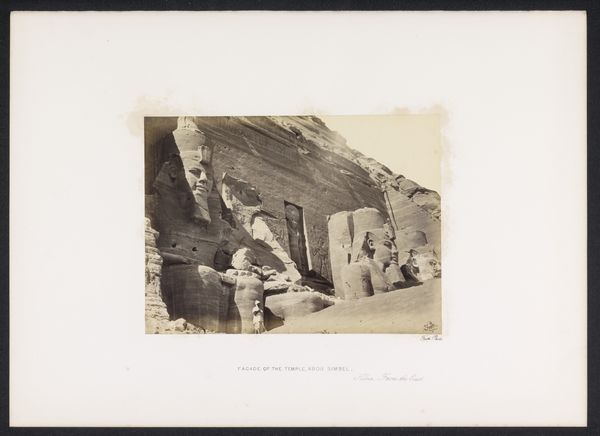
photography, albumen-print, architecture
#
landscape
#
ancient-egyptian-art
#
photography
#
albumen-print
#
architecture
Dimensions: Image: 6 5/8 × 8 11/16 in. (16.9 × 22.1 cm) Mount: 18 11/16 × 12 5/16 in. (47.5 × 31.2 cm)
Copyright: Public Domain
Editor: Here we have Maxime Du Camp's "Vue de la façade du Spéos de Phré, à Abousembil," an albumen print from 1850, currently residing at the Met. It’s fascinating to see this ancient architecture documented so early in the history of photography. How should we approach thinking about this work? Curator: Well, considering this albumen print, we need to think about the labor involved in both its creation and the image it depicts. Think about the extraction of the materials for both the monument and the photograph. Who built this temple, and who developed this print? Editor: I hadn’t considered the connection between the processes of making. So you’re saying both the ancient carving and the 19th-century photograph involved significant physical labor, transforming raw materials? Curator: Precisely. Look at the scale of the figures carved into the rock face, then think about the processes needed to capture that detail with a camera and develop an albumen print of this size in 1850. It speaks to ambition on an almost incomprehensible level. Editor: Right, it makes you think about the social context of monumental construction, and also the kind of investment – of time, resources, and human effort – required for photography in its early stages. Curator: Indeed. How does this impact the stories that each attempt to tell? Who got to determine those stories? Think about the access to materials, about who owns the means of artistic production, even back then. The photograph flattens the great monument, but also makes it more widely accessible, thus consumable. Editor: So, the print creates access but it can't recreate the labor it embodies? And perhaps more importantly, we're invited to consider the photograph not as an innocent representation, but also as an artifact with its own labor story? I see it now. Thank you! Curator: It's a fascinating work once we think through its materiality, wouldn’t you say?
Comments
No comments
Be the first to comment and join the conversation on the ultimate creative platform.
